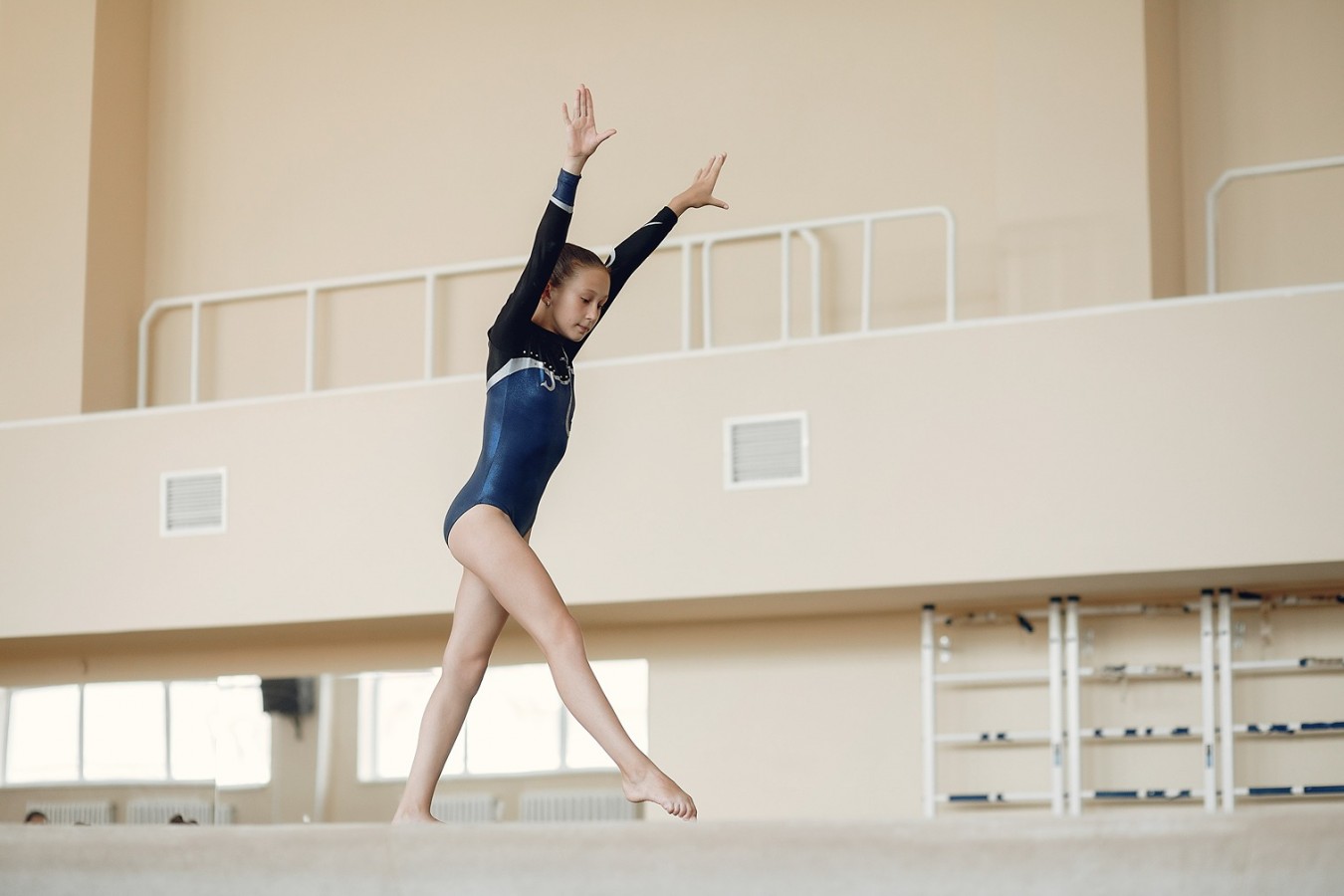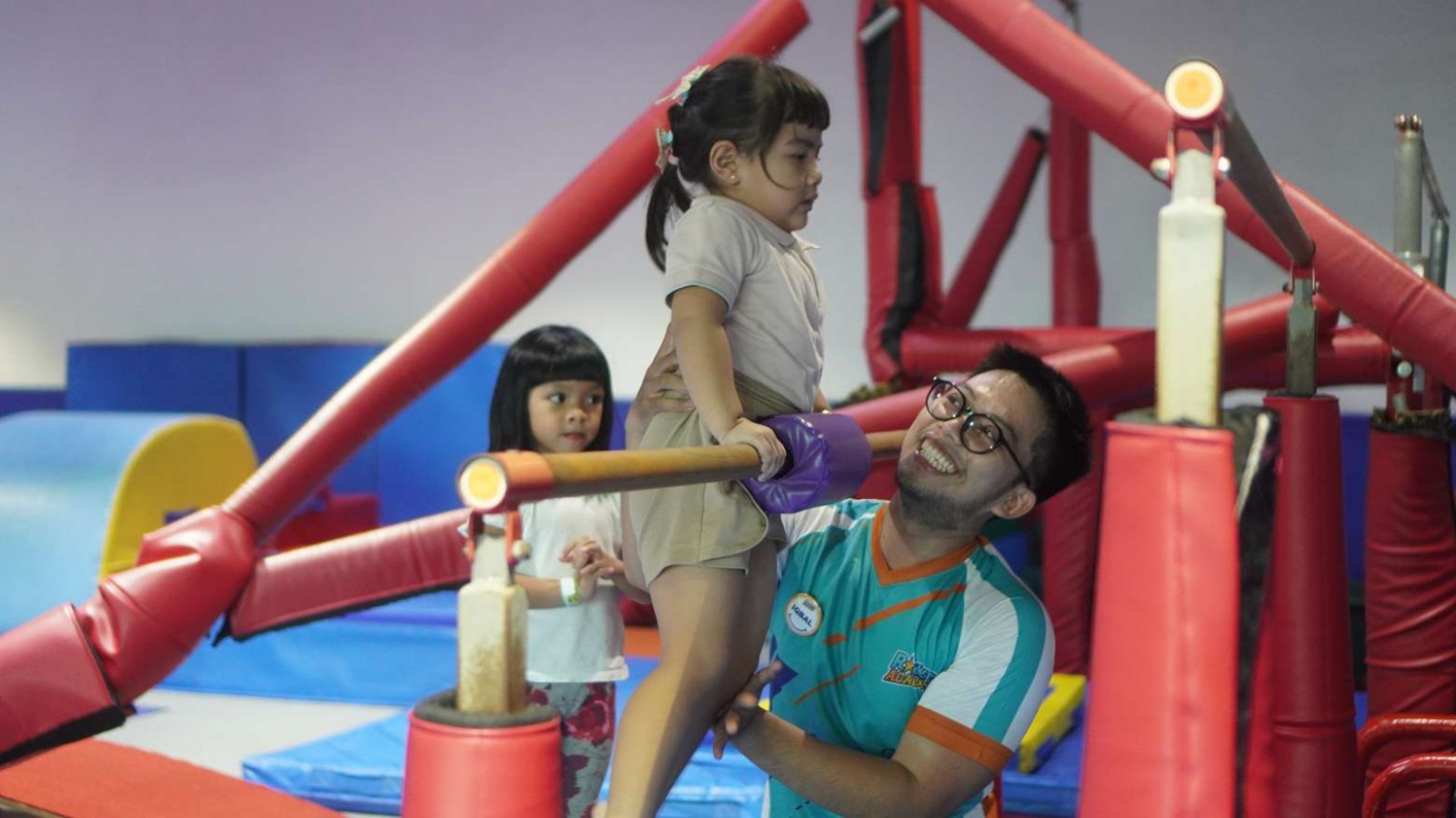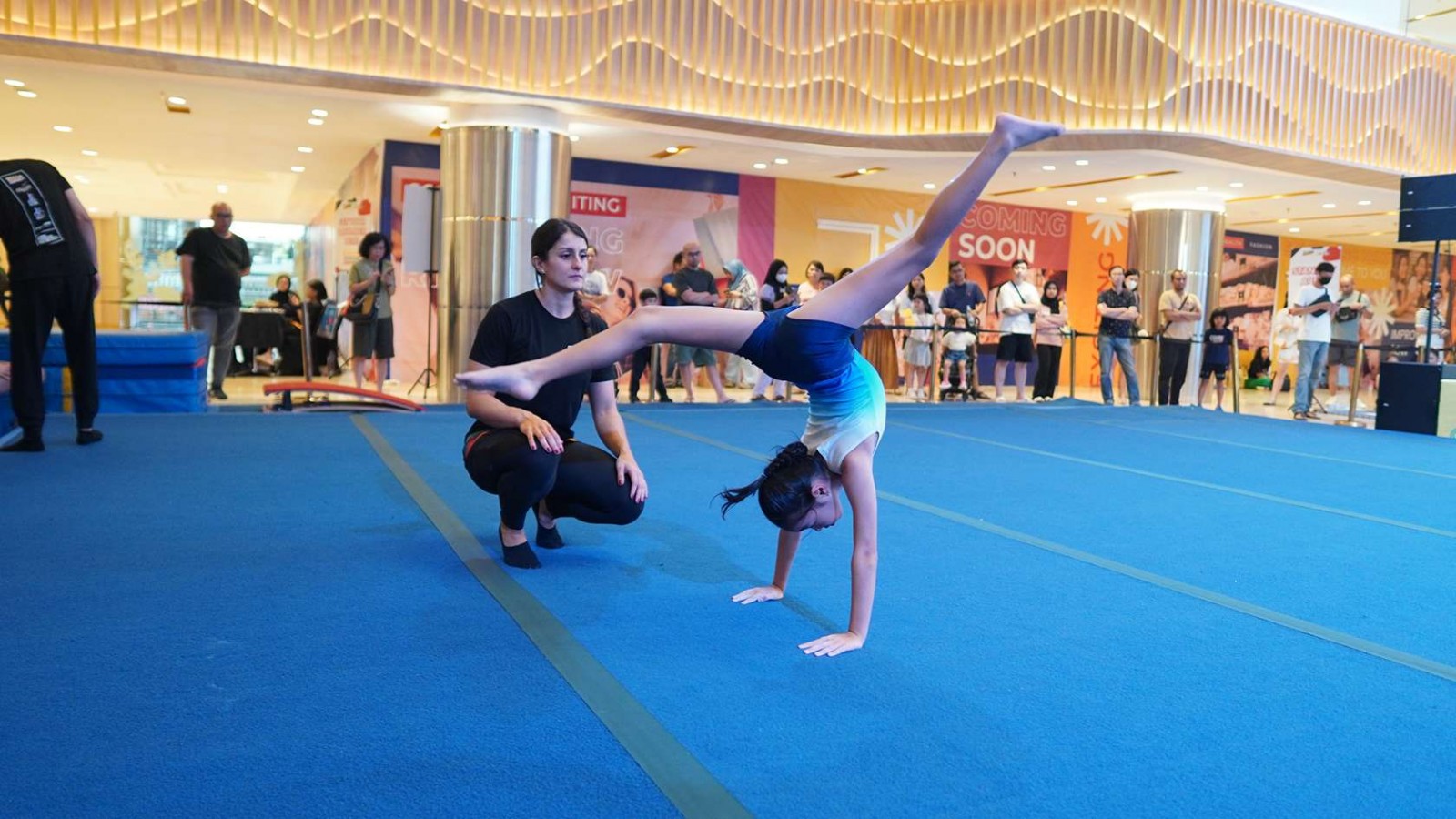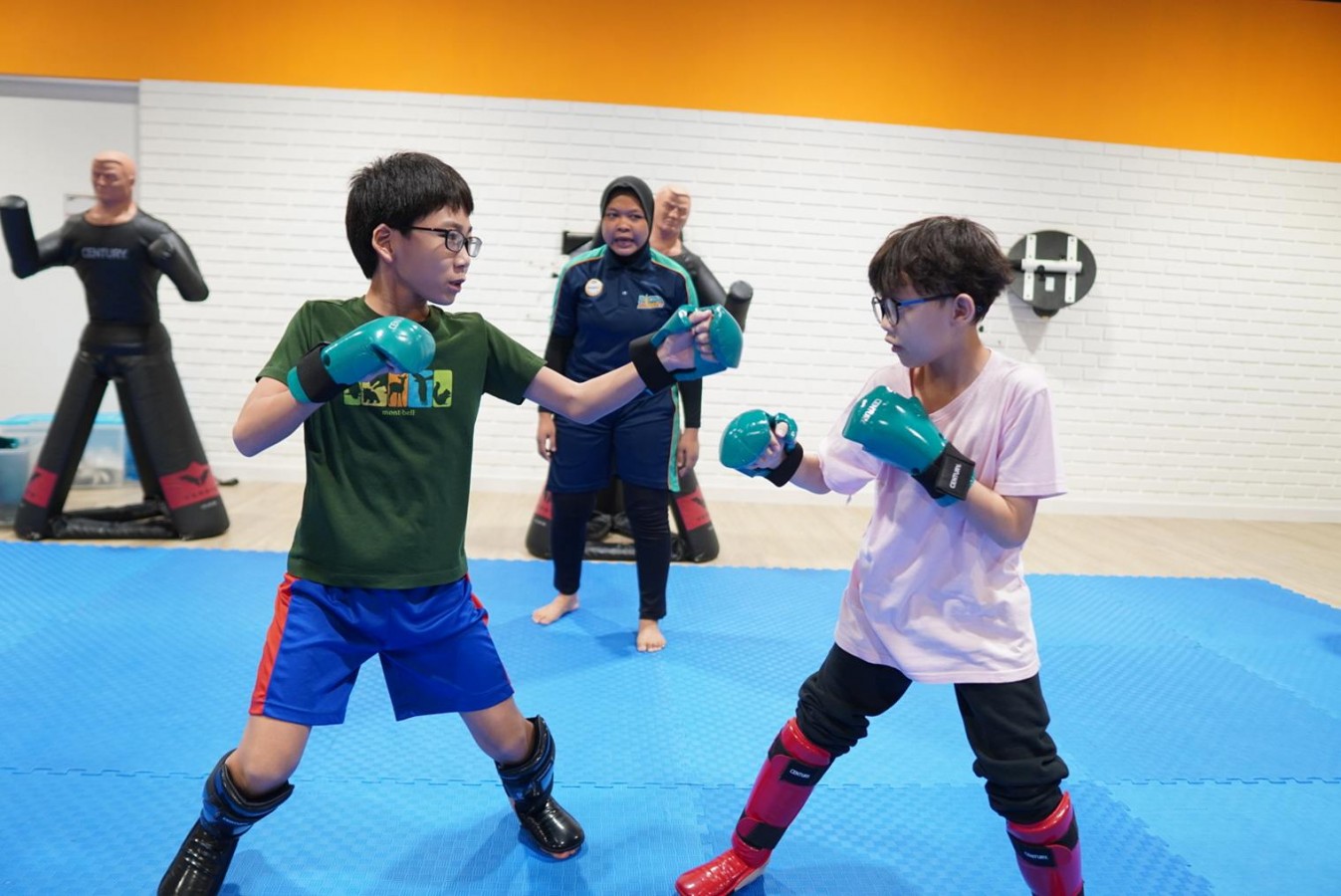Competitive Gymnastics: A Comprehensive Guide for Parents

As a parent, witnessing your child's interest in gymnastics can be both thrilling and daunting. You might find yourself navigating through a world filled with complex terms, competitive levels, and unfamiliar scoring systems.
However, understanding the fundamentals of competitive gymnastics can help you support your child's journey effectively. In this comprehensive guide, we'll delve into the intricacies of competitive gymnastics, explore its various levels, decipher the scoring process, discuss foundational skills, and offer guidance on selecting the right gym for your child.
Understanding Competitive Gymnastics
Competitive gymnastics is a sport that combines strength, flexibility, agility, and artistic expression. It involves performing routines on various apparatus such as the balance beam, uneven bars, vault, and floor exercise. Gymnasts are evaluated based on execution, difficulty, and artistry by a panel of judges.
Levels in Competitive Gymnastics
Competitive gymnastics is organized into different levels, each representing a certain skill proficiency and age group. In the Rockstar Academy that uses the USA Gymnastics Program, the levels typically start from Level 1 for beginners and progress upwards to Level 10, with elite levels beyond. Here's a brief overview:
- Level 1-3: These levels are designed for beginners, focusing on basic skills and technique development.
- Level 4-7: Intermediate levels where gymnasts start mastering more advanced skills and routines.
- Level 8-10: Advanced levels where gymnasts showcase highly skilled routines with increased difficulty.
- Elite Levels: Reserved for the highest level of gymnasts who compete at national and international levels.
How Judges Score Gymnast Moves
Scoring gymnastics routines is a complex process that involves precision, expertise, and attention to detail. As a parent whose child is involved in competitive gymnastics, understanding how judges score gymnast moves can provide valuable insights into the sport and help you support your child's journey more effectively.
A. Understanding Gymnastics Scoring System
- Code of Points
Gymnastics routines are scored based on a standardized Code of Points established by the International Gymnastics Federation (FIG). This code outlines the difficulty and execution requirements for each routine.
- Two Key Components
Gymnastics routines are scored based on two main components: difficulty and execution. These components are evaluated separately and then combined to determine a gymnast's final score.
B. Scoring Criteria
1. Difficulty (D Score)
- The Difficulty Score reflects the complexity and intricacy of the routine. It is determined by the difficulty level of skills and combinations performed by the gymnast.
- Gymnasts receive points for each skill and connection they successfully execute during their routine. The more difficult the skill, the higher the score it earns.
- Judges evaluate the routine's difficulty by assessing the elements performed, including leaps, jumps, turns, and acrobatic skills like flips, twists, and somersaults.
2. Execution (E Score)
- The Execution Score measures how well the gymnast performs the routine. It focuses on the precision, form, technique, and artistry displayed during the routine.
- Judges deduct points for errors such as execution faults, lack of control, form breaks, balance issues, steps on landings, and falls.
- Execution deductions are often based on a specific set of guidelines outlined in the Code of Points. Judges deduct fractions of a point for each error observed during the routine.
- Scores are typically out of a maximum total, and deductions are subtracted from this total to arrive at the final score
Teaching Kids the Foundation of Gymnastics
Building a strong foundation is crucial for a child's success in gymnastics. Here are some tips for teaching kids the basics of gymnastics:
- Focus on Fundamentals
Start with basic skills such as rolls, handstands, cartwheels, and jumps. Emphasize proper technique and form from the beginning.
- Encourage Strength and Flexibility
Incorporate exercises that improve strength, flexibility, and coordination. Core strength and flexibility are particularly important in gymnastics.
- Progress Gradually
Introduce more advanced skills only when the child has mastered the basics. Progression should be gradual and tailored to the child's abilities and readiness.
Selecting a Gym for Learning Gymnastics
As a parent, choosing the right gym for your child to learn gymnastics is crucial. Not all gyms are created equal, and finding the right fit can make all the difference in your child's experience and progress in the sport. Here's a comprehensive guide to help you navigate the process of selecting a gym for your aspiring gymnast:
1. Research Local Gyms
Begin your search by researching gymnastics facilities in your area. You can use online search engines, social media platforms, or ask for recommendations from other parents whose children are involved in gymnastics. Make a list of potential gyms to consider.
2. Visit the Gyms
Schedule visits to the gyms on your list. During your visit, pay attention to the facility's cleanliness, safety measures, equipment quality, and overall atmosphere. A well-maintained and safe environment is essential for your child's well-being and development.
3. Evaluate the Coaching Staff
The coaches play a significant role in your child's gymnastics journey. Observe the coaching staff during classes or competitions to assess their level of expertise, teaching style, and interaction with the gymnasts. Look for coaches who are knowledgeable, supportive, and passionate about teaching gymnastics.
4. Assess the Program Options
Determine whether the gym offers gymnastic programs that align with your child's skill level and goals. Many gyms offer recreational classes for beginners as well as competitive programs for more advanced gymnasts. Ensure that the gym provides opportunities for progression and skill development within its programs.
5. Consider the Cost and Schedule
Cost and scheduling are practical considerations when selecting a gym. Compare the tuition fees, registration costs, and any additional expenses associated with the gym's programs. Additionally, consider the gym's schedule and class availability to ensure that it aligns with your family's schedule and commitments.
6. Seek Feedback and Reviews
Don't hesitate to ask for feedback from current or former members of the gym. Online reviews and testimonials can also provide valuable insights into the gym's reputation, strengths, and areas for improvement. Consider both positive and negative feedback when making your decision.
7. Trial Classes or Camps
Many gyms offer trial classes or camps that allow prospective students to experience their programs before committing. Take advantage of these opportunities to gauge your child's interest and comfort level in the gym environment.
8. Trust Your Instincts
Ultimately, trust your instincts and choose a gym where you feel confident and comfortable entrusting your child's gymnastics education. Your intuition, coupled with thorough research and evaluation, will guide you toward the best decision for your child.
Interested in Enrolling Your Children?
Selecting the right gym for your child's gymnastics journey is an important decision that requires careful consideration. If your children show interest in gymnastics, enrolling them in a gymnastics program can greatly enhance their skills and overall physical development.
Rockstar Academy stands out as a premier Sports & Performing Arts Academy offering a variety of physical activity programs. Their gymnastics classes are meticulously designed to enhance strength, flexibility, balance, agility, and coordination in a safe and supportive environment.
With a focus on skill progression in Beams, Bars, P-Bars, Tumbling, and Vaulting, children can build confidence, set and achieve goals, and participate in Testing & Competitions such as Gymnastics Testing and Gymnastics Elite Championships.
Gymnastics Testing supports progression to higher levels and readiness for national and international competitions, while Gymnastics Elite Championships foster higher standards of achievement, discipline, sportsmanship, and resilience.
Moreover, Rockstar Academy offers a free trial class for those interested in exploring gymnastics. If you're considering gymnastics for your children, don't hesitate to reach out to Rockstar Academy today!
FAQs
At what age can children start competitive gymnastics?
Children can start gymnastics as early as preschool age, typically around 4-5 years old. However, the appropriate age for competitive gymnastics varies depending on the child's physical and emotional readiness.
How often should my child practice gymnastics?
Practice frequency depends on the child's age, skill level, and goals. Beginners may start with 1-2 classes per week, while more advanced gymnasts may train 15-20 hours or more per week.
Is gymnastics safe for children?
When taught by qualified coaches in a properly equipped facility, gymnastics is a relatively safe sport. However, like any physical activity, there are inherent risks. It's important to choose a gym that prioritizes safety and follows proper protocols.
How can I support my child's involvement in competitive gymnastics?
Encourage your child, provide emotional support, and attend their competitions. Communicate openly with coaches, and help your child maintain a healthy balance between gymnastics and other aspects of life.



